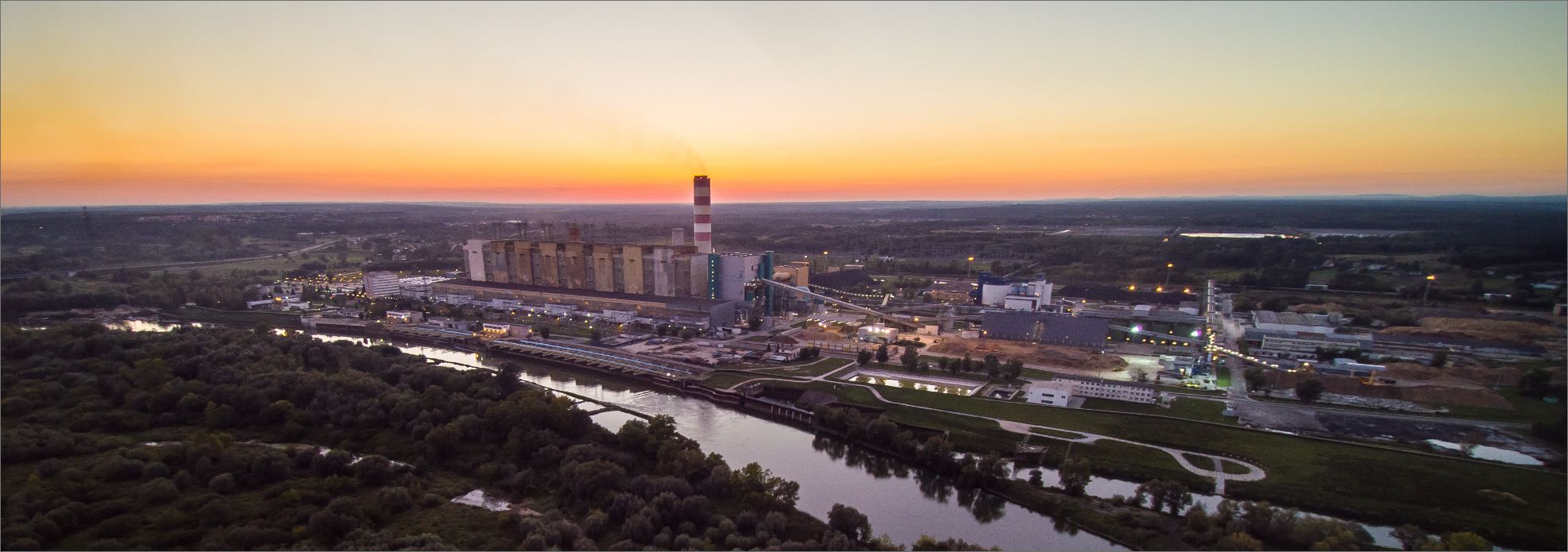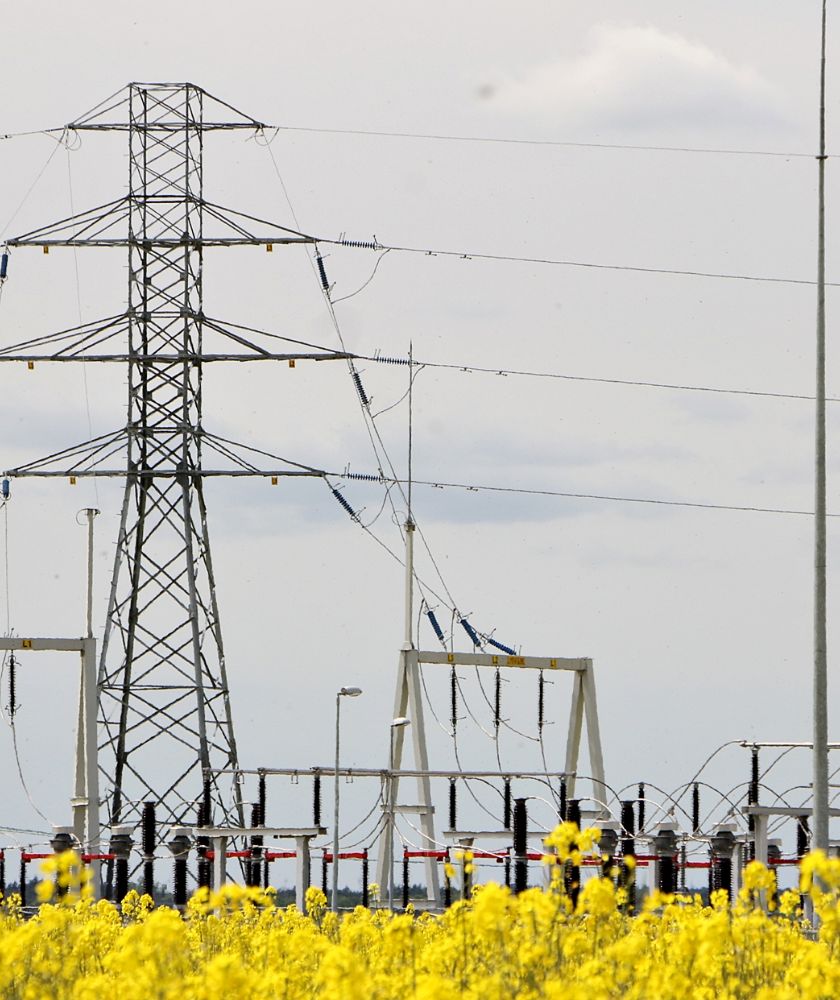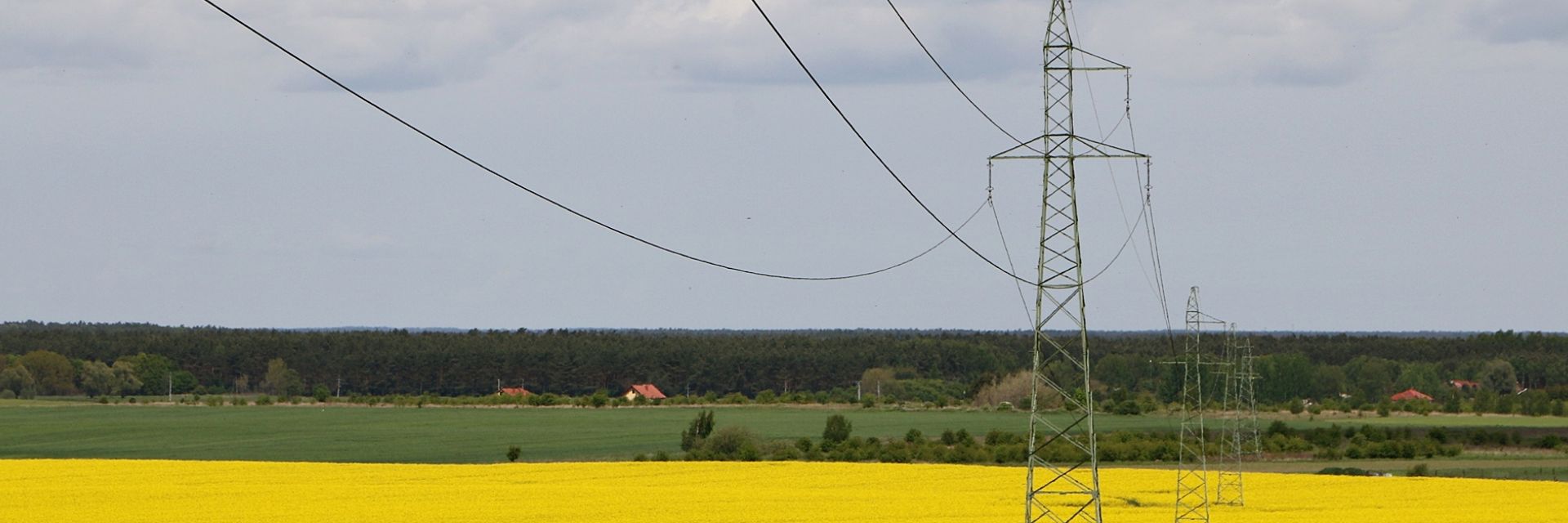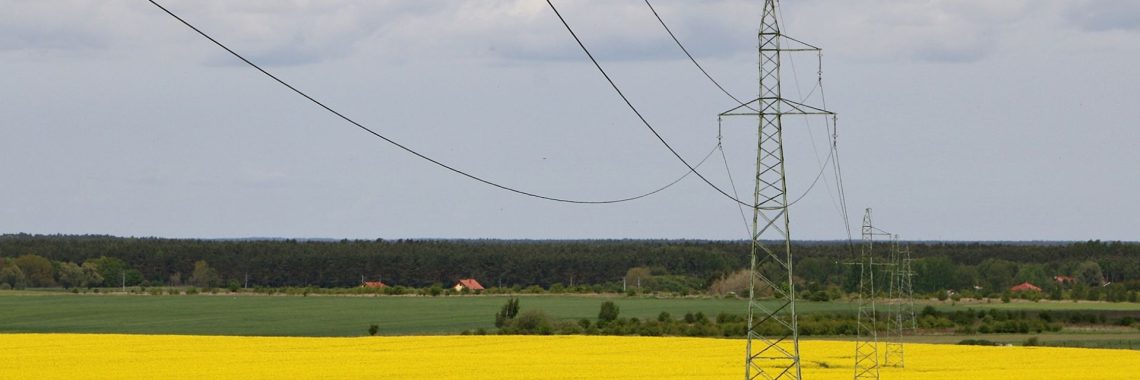ESRS E1 Climate change

Transition plan for climate change mitigation
The Enea Group has not prepared a uniform transition plan for climate change mitigation for all its companies. The Group intends to prepare such a document on the basis of, among other things, plans to achieve climate neutrality, which have already been implemented in some of the companies. Elements of transition for climate change mitigation are included in the Enea Group Development Strategy until 2035, which was adopted for implementation in November 2024. One of the strategic directions set by the Strategy is transition of coal assets, and the following targets in this area remain to be achieved:
- organizational transition of coal assets;
- transition of existing generation sources towards low-carbon power generation;
- development of new low-carbon and zero-carbon generation capacities,
- increase in the efficiency of production infrastructure and internal optimization activities;
- business expansion through new revenue lines;
- ensuring socially responsible transition of regions;
- decarbonization of the district heating system;
- efficient management of the district heating system.
The Enea Group plans to prepare a transition plan for climate change mitigation. The work will start in 2025 and it is planned to complete it in 2026.
Material impacts, risks and opportunities and their interaction with strategy and business model
The Enea Group has identified 2 physical risks and 19 transition risks related to climate change. They are presented in the tables below. The analysis of climate-related risks did not cover companies from the LWB Group as they are planning to conduct an independent analysis in the future. The risks and opportunities presented were not included in the Double Materiality Analysis, but in the Enea Group’s opinion, their presentation in this Report does not affect the outcomes of the analysis.
The Enea Group has not carried out an analysis of resilience of its strategy and business model to climate change.
Material topics: Climate change adaptation, RES and new business lines, Emissions, Energy
E1-2 – Policies related to climate change mitigation and adaptation
Because of the profile of conducted activity and owned assets, the Enea Group is exposed to a number of risks related to climate change – physical and transition risks. One of the adaptation measures taken by the Group is development of new lines of business. The Enea Group is analyzing opportunities for or investing in methods of energy storage, hydrogen technologies and concepts for exploiting traditional RES in a new form.
The Group’s ambition is to reduce the carbon footprint of energy production, which requires a transition of coal assets which make up a part of the portfolio. The path of this transition includes, among others, development of RES, construction of gas-fired power plants and increase in the share of biomass in energy production. The Group has not prepared a comprehensive decarbonization strategy for all the three scopes. Because of the size of the Enea Group, energy consumption is one of the most important environmental aspects and also translates into operating costs and energy generation costs in the Group.

The entire Enea Group uses the approach described in the Enea Group Climate Policy, adopted in 2023.1 The Policy refers to climate change adaptation, greenhouse gas emissions, energy consumption as well as fuel savings and emission reduction. The Policy defines ambitions with regard to reducing adverse impact on climate and managing adaptation to the current and forecasted climate changes. Provisions of the Policy encompass all the Group’s activities carried out within the value chain that may have an impact on climate change.
¹ In connection with updating the Development Strategy, the Enea Group plans to update the Climate Policy.
Priorities set by the Enea Group Climate Policy are grouped in three areas – climate change adaptation, increased awareness of climate changes and impact on them as well as mitigation and reduction of global warming.
- adapting assets and business activities as well as adopting appropriate directions for the Enea Group development to changing climate phenomena,
- offering products and/or services allowing customers to adapt to climate change,
- taking climate aspects (including climate-related risks and opportunities) into account in the assessment of new investments,
- creating higher revenue from sales of environmentally-friendly products and services,
- taking active part in efforts to transition towards a climate-resilient circular economy,
- cooperation with business partners and social stakeholders to adapt to climate change and improve efficiency of energy use,
- inclusion of issues related to climate aspects to corporate documents,
- giving a priority to consideration and implementation of proposed initiatives related to climate protection,
- ongoing monitoring of proposed regulations in the context of climate impacts and mitigation actions that have or may have an impact on the Group,
- providing priority funding and cooperation in obtaining support for climate protection projects, including in particular those aimed at improving energy efficiency, reducing CO2 emissions, increasing low-carbon energy production,
- taking part in organizations working to reduce negative climate impacts and working together with state institutions to develop recommendations, actions and solutions related to climate protection aspects.
- promoting culture and knowledge about climate responsibility among Group employees, customers, service contractors and suppliers throughout the value chain,
- activities aimed at access to pro-environmental materials and information that develop the employees’ knowledge, skills and competences in the context of climate change issues,
- promoting activities aimed at raising public awareness of the need to save energy and increasing energy efficiency,
- supporting grassroots initiatives by employees in the context of climate change mitigation and pro-environmental measures,
- forming relationships with local power engineering communities by developing environmental education initiatives for young people, raising awareness of modern generation technologies and clean energy storage,
- initiating (in cooperation with local governments) pilot projects, e.g. IT tools contributing to energy security and management (cooperation with Energy Clusters).
- replacing conventional energy based on fossil fuels with highly efficient low- and zero-carbon energy,
- developing renewable energy, including hybrid installations, energy storage, photovoltaics, on- and off-shore,
- applying innovative and new technologies and solutions to reduce greenhouse gas emissions,
- striving for energy efficiency improvements in terms of reducing or not increasing fuel and energy consumption,
- supporting electromobility and/or climate-neutral mobility,
- offering products and/or services to customers to mitigate adverse climate change,
- taking climate aspects in the assessment of concepts and assumptions for new investments,
- continuous development of the energy infrastructure (including smart grid) needed to decarbonize the energy system,
- seeking innovative technical and business solutions that minimize the impact of Enea Group’s operations on climate change,
- monitoring greenhouse gas emissions from Enea Group’s sources
- cooperation with business partners and social stakeholders to reduce adverse climate change and improve efficiency of energy use.
The targets and priorities of the Climate Policy have been set by the Enea S.A. Management Board and are supervised by it in accordance with provisions of the Climate Policy of the Enea Group. The owner of the document is the Director of the Strategy and Innovation Department at Enea S.A., whose employees coordinate and support activities taken in this area by each of the companies. The companies’ management boards are responsible for implementing the policies at their own levels.
The Climate Policy of the Enea Group is an internal document which does not refer to standards or initiatives of third parties. Consultations when the document was being prepared were held in companies from the Enea Group. A presentation describing the document has been published on the Intranet, accessible to all the employees.
- Enea Group Development Strategy until 2035
-
ENEA Group Code of Ethics, which obligates the Group to, among others:
- taking environmental factors into account when working on new services and products,
- invest in solutions satisfying stringent environmental standards,
- work on technological solutions to increase production of energy from renewable sources,
- use energy and natural resources reasonably,
- aim to reduce the amount of waste and pollution,
- prevent failures posing a threat to the environment.
- The ENEA Group Compliance Policy, which orders, among other things, to:
- take actions to minimize pollution emissions and to ensure reasonable management of natural resources,
- undertake initiatives to retain the balance between the Group’s operations and the natural environment,
- carry out capital expenditures using environmentally friendly technologies,
- support renewable energy sources,
- cooperate with organizations responsible for environmental protection.
- The Enea Group Energy Efficiency Policy,1 which aims to, among other things:
- develop coherent rules and guidelines supporting economical and reasonable energy management in all the Enea Group companies,
- implement and certify an energy management system in the Enea Group based on international standards,
- systematize roles and tasks of Enea Eko as an entity responsible for monitoring, reporting and especially executing the processes related to the performance of energy efficiency obligations imposed on the Enea Group companies, pursuant to the requirements of the Energy Efficiency Act and other prevailing regulations,
- joint performance of the current national energy efficiency target defined in Article 18 of the above Act,
- intensification of the performance of the energy savings obligation as referred to in Article 10 of the above Act by obtaining energy saving certificates for investment activities planned by the Enea Group which will result in improvement in energy efficiency,
- build the image of the Enea Group as an organization promoting activities which bring benefits to customers.
1 The Policy has been in force since 1 January 2025; it has replaced the previous Policy, which had been in force since 1 December 2018.
Actions and resources in relation to climate change policies
In 2024, the Enea Group performed the following measures to reduce emissions:
- investments in the distribution network performed by Enea Operator,
- investments in wind farms and photovoltaic farms coordinated by Enea Nowa Energia,
- modernization of coal boilers in the “Zachód” Heat Plant,
- increase in energy efficiency (replacement of lighting sources at Enea Wytwarzanie).
The activities pursued concerned the Group’s own operations and were carried out within the area covered by the Group’s business. The activities did not affect any stakeholder groups. They are intended to be continued in the coming years. The expected outcome of the activities described above is an improvement in the technical condition of the distribution network, an increase in the share of renewable energy sources in the Group’s energy mix, an increase in the efficiency of the heat generation process, and an improvement in the energy efficiency of lighting sources.
The measures taken are in line with the Group’s Development Strategy, in particular the strategic directions delineating the transition of coal assets and the development of RES capacity. These measures are also related to the Climate Policy’s priorities, in particular the priority to mitigate and reduce global warming. Moreover, activities aimed at improving energy efficiency are consistent with the objectives set forth in the Energy Efficiency Policy.

The Enea Group did not collect information about the impact of activities on volumes of emissions.
Actions planned for the future in the area of climate change mitigation are described in part SBM-1 – Strategy, business model and value chain. The actions are to bring about reduction in the emission factor for energy generation from 776 kg CO2/MWh to 278 kg CO2/MWh in 2035.
Detailed information on Taxonomy-aligned capital expenditures and operating expenses can be found in the tables in the subchapter “Taxonomy-related Disclosures”, in the chapter “Environmental Disclosures” of the present Report. The Enea Group does not estimate future Taxonomy-aligned capital expenditures and operating expenses. Information about present financial resources of the Group earmarked for the actions can be found in the Management Board Report on the Activity of Enea S.A. and the Enea Group in 2024 in the part: Operational and financial data and implementation of key investment projects, by area of the Enea Group’s activity.
E1-4 – Targets related to climate change mitigation and adaptation
In 2024, the Enea Group did not set targets related to climate change adaptation, greenhouse gas emissions, energy and fuel saving. The Group’s targets must be consistent with national targets. In recent years, political proposals for coal assets have been changing, which has made it impossible to prepare the targets accurately. The Enea Group plans to prepare a transition plan for climate change mitigation which will cover emission reduction targets. The work will start in 2025 and it is planned to complete it in 2026.
Considerable amount of emissions resulting from the Enea Group’s activity are Scope 1 emissions,2 or direct CO2 emissions resulting from fuel combustion in stationary or mobile sources and those resulting from manufacturing or processing or fugitive emissions of coolants.
Indirect targets related to reducing Scope 1 emissions have been adopted within the Enea Group Development Strategy until 2035. The Strategy assumes a gradual replacement of coal with gas and RES installations, with a simultaneous increase in the total energy production in the Enea Group. The strategic target is to reduce the CO2 emission factor per MWh: from the output value of 776 kg CO2/MWh in 2024 to 448 CO2/MWh (a decrease by 42%) in 2030, to the target value of 278 CO2/MWh (a decrease by 64%) in 2035. The adopted absolute targets take into account the assumptions about the transformation of the power energy sector in Poland.
LW Bogdanka set the target to reduce energy consumption in own operations by 3,400 MWh per annum in 2024-2026. The planned tasks include:
- modernization of lighting (gradual replacement of the existing systems with LED lighting within 3 years) with the planned annual savings in energy consumption at a level of about 850 MWh,
- replacement of two transformers supplying the mine in the field of Stefanów with new ones of higher efficiency, with the planned annual savings in energy consumption of about 209 MWh,
- replacement of the pumping set for main drainage in the pump chamber underground with a new set of higher efficiency, with the planned annual savings in energy consumption of about 2352 MWh.
The targets are defined in absolute values, they pertain to LWB’s own operations and have been set by comparing profiles of energy consumption for existing and planned plant and machinery; the targets have not been defined on the basis of scientific evidence. Through expert consultations, stakeholders were involved in the process, in particular: auditors, employees of organizational cells responsible for environmental areas and the certification body. In 2024, there were no effects in terms of the achievement of the targets.
2 Except for LW Bogdanka, where the greatest portion is Scope 3.
E1-5 – Energy consumption and mix
For purchased energy, its consumption was calculated on the basis of invoices and metering devices, and takes into account the energy purchased outside of the Group for heating or to cover grid losses. The consumption of fuels from coal, oil and gas was determined on the basis of calorific values of the individual fuels from KOBiZE. The data on the calorific value of biomass has been determined in the laboratories of Enea Ciepło and Enea Elektrownia Połaniec.
To determine energy intensity, all the Group companies were included, except for Enea Centrum, which does not conduct activity in a high climate impact sector. The Group’s revenues were assumed to be net revenue from sales.
E1-6 – Gross Scopes 1, 2, 3 and total GHG emissions
Net sales revenues were assumed as the Group’s revenues to determine the emission intensity.
The Enea Group adopted the operational control method to determine the organizational boundaries for its greenhouse gas (GHG) inventory. The calculations were based on data provided by Enea Group companies. Information on the emission volume of the Lubelski Węgiel Bogdanka Group has been consolidated with the other Enea Group companies. The energy and material flows between Enea Group companies have also been verified, and their emissions have been assigned to the first company in the Group.
Based on data obtained from Enea Group companies, taking into account the organizational boundaries adopted for the GHG emissions inventory, the following emission sources (among others) were included in Scope 1: hard coal, light fuel oil, heavy fuel oil, diesel fuel, gasoline, LPG, nitrogen-rich natural gas, high-methane natural gas, propane-butane. For Scope 1 emission calculations, priority was given to CO2 values reported by companies under the EU ETS and reports to KOBiZE. The emission factors used are derived from the DEFRA database (2024). Biogenic CO2 emissions from the combustion of biocomponents that are an admixture to fuels (gasoline and diesel) and from biomass combustion are presented as out-of-scope emissions.
Sources of emissions such as electricity and district heating for own use are included in Scope 2. Scope 2 emissions have been calculated using the location method based on the KOBiZE publication “CO2, SO2, NOx and total dust emission factors for electricity” based on the information contained in the National Database on Greenhouse Gas Emissions and Other Substances for 2023 for Electricity and the Energy Regulatory Office’s publication Thermal Energy in Figures 2023 for district heating. In the market method, the same Scope 2 indicators were adopted for district heating in the location method. Due to the unavailability of residual emission indicators for specific electricity suppliers, the residual indicators published by the AIB in the European Residual Mixes for 2023 were used. For Enea Ciepło and ENEA Operator Sp. z o.o., which purchase electricity directly from a Group company (Enea Power and Gas Trading) acting as a trader, the emissions from the purchased electricity were taken into account using weighted average emission factors – in order to avoid double counting of emissions, zero emissions were assigned to the volumes produced by the Group’s generating companies. Electricity purchased and sold by Enea S.A., which sells electricity to households and businesses across the country, also within the Group, was included in accordance with the GHG Protocol Scope 3 Category 3.
In 2024, the reporting process covered all categories in Scope 3, with no emission sources in some categories, such as Category 14: Franchises, which demonstrates that this business area was not reported on by any Group company. Scope 3 emissions were calculated using emission factors based on the EPA (2024) expenditure base and the EPA (2024), DEFRA (2024), KOBiZE and ecoinvent 3.11 quantitative factors. The percentage of emissions calculated using primary data obtained from suppliers is 0%.


The Enea Group did not use any contractual instruments, the market interest rate of greenhouse gas emissions related to the purchased energy in a package with instruments is 0%. The Group did not purchase any electricity associated with guarantees of origin or other certificates. All electricity consumed is reported in accordance with the standard energy mix for Poland.
E1-7 – GHG removals
The Enea Group does not take advantage of any GHG removal projects.
E1-8 – Internal carbon pricing
The Enea Group has not adopted any internal carbon prices.